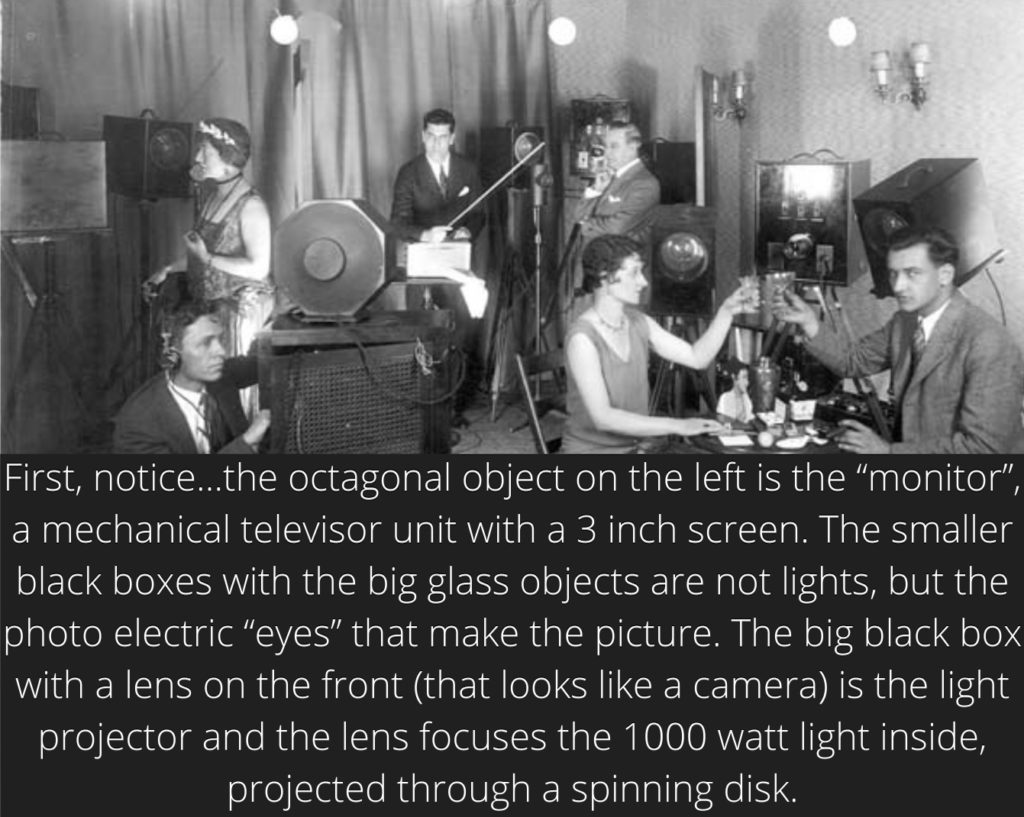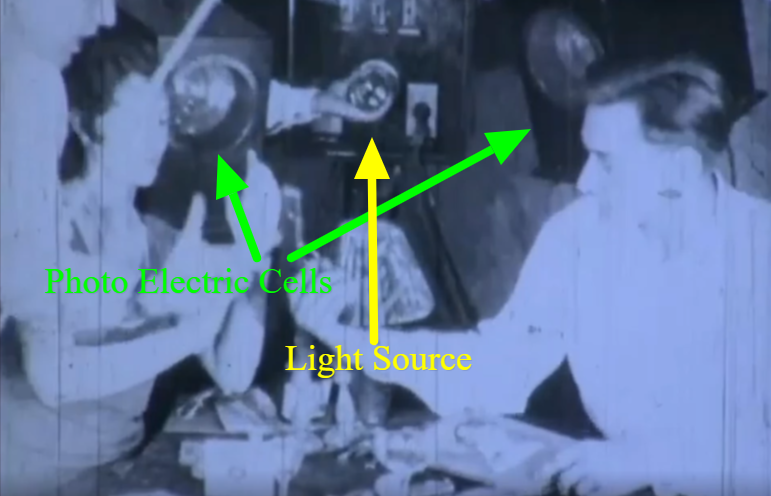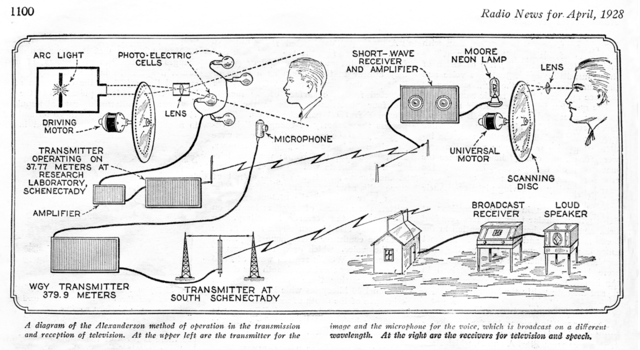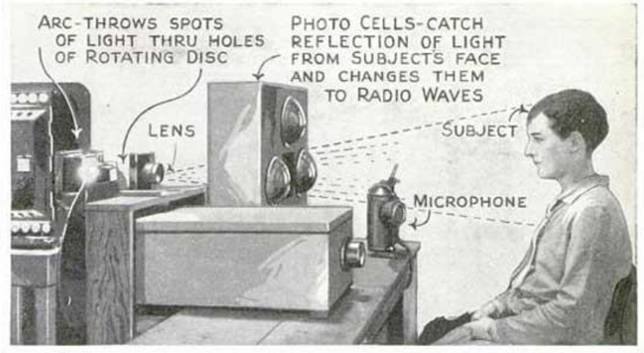Rare: Mechanical Broadcast of TV’s First Drama, The Queen’s Messenger

This is part of the first ever dramatic television broadcast called “The Queen’s Messenger” and what you are seeing in this clip below is how they shot a close up scene that concentrated on the actors hands, and what they had in them. The experiment was broadcast by GE’s Schenectady, New York television station W2XB and radio their station WGY, on September 11, 1928. It was a radio drama adapted for television and broadcast both sound and moving pictures. These were received by televisions with screens that were three inches in diameter that were set up in various places all around the city. There were special effect props for this broadcast to enhance the actors’ performance and their sounds.
There were only four actors, these two hand actors (on the right) and two face actors…a female Russian spy and a male British diplomatic courier. Only close ups were possible and there were three light projectors in the room with six photo electric cell boxes. One light projector was for the female face actor, one for the male face actor and one for the hand actors.
By the way, this is a brightly lit reenactment for the film camera, because the studio had to be twilight dark in order for the not so sensitive photo electric cells to capture the 24 lines of light projected onto the subjects.
Just to be clear, here are the elements that you just saw in the film clip.

Also shown here is an April 1928 diagram of the GE mechanical television process that includes the broadcast and reception method. Notice that two radio transmitters were used in these experimental broadcasts. The visual image was broadcast on GE’s experimental shortwave station W2XB operating on 37.33 meters (7.7 MHz) and the sound was broadcast over their radio station WGY, operating on 379.9 meters (790 KHz).
The last image is a simplified version of the broadcast apparatus from an April 1928 Mechanic’s Illustrated.

